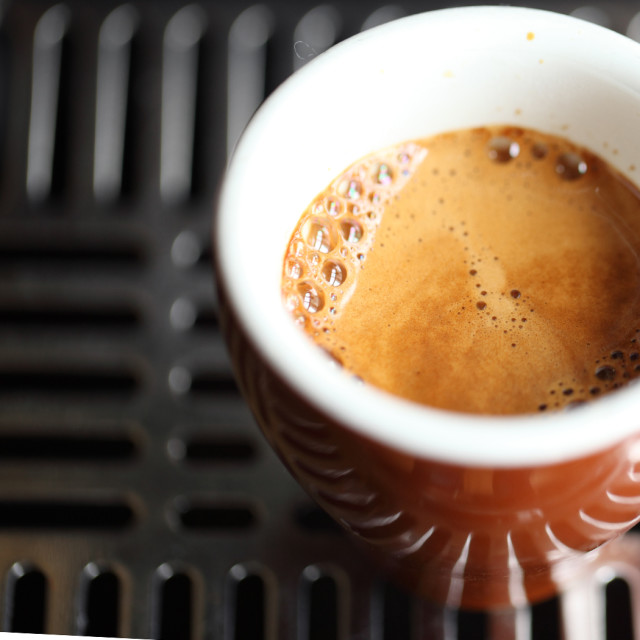Blue Bottle Explains: Espresso De-gassing
Dear Blue Bottle Coffee,
I signed up for an espresso subscription, and I know you pride yourselves in freshness and quick time between roasting to delivery. For drip and other non-pressurized methods of brewing this is great, but in espresso, I thought the beans needed to de-gas before use. Is this time built into your process, or is it up to me to add this time in myself? How many days of de-gassing do you recommend for the best shot?
Sincerely,
Eager for Espresso
--
24, 48, 72 Hours and Counting
We are proud of our roast-to-door delivery times, this is certainly true. We talk about it in our founding story. A heroic declaration! A rallying cry! What is less commonly known, however, is that coffee in our cafes, prepared by the cup, is allowed to de-gas (or “rest”) after roasting, calibrated to the precise day in which it will be most delicious, and only brewed at that point.
When our coffee is delivered to your home (or sold as whole beans in our shops) we aim to get you the freshest beans possible. We want to make sure that it is in your hands and ready to use at the time you feel is best. Coffee that we ship to you is sent out within 24 hours of roasting, reaching you 1–5 days after that. This works out beautifully for our Hayes Valley Espresso, which we think is most delicious 3–8 days out of the roaster. It is possible that you might get it one day early, but most likely, you’ll receive it within the optimum range.
For a less-dense espresso (like Opascope) we recommend a longer de-gassing window (8–12 days) to highlight the sweetness and acidity. If you receive Opascope in the mail, you may wish to wait a couple days to use it, to ensure that you’re at least at the beginning of this range. We encourage you to experiment within these guidelines to see when you most enjoy your coffee. The goal, after all, is pleasure.
When coffee is very fresh, preparing it as espresso will have some interesting characteristics. You will notice that as the shot pulls, it may go slower than expected, it will be more gassy, and the crema will be very large and fluffy. The irony here is that a shot made with too-fresh beans can look like the poster child for great espresso because of the lovely red-brown crema it yields, but the flavor will be subpar. An expression of burned carbon will cover up much of the delicate sweetness that emerges once the beans have had a chance to rest.
Why Does Coffee Need to De-gas?
The First Crack
A coffee bean is the seed of the coffee cherry. After the cherry is picked, depulped, dried (using either natural-, washed-, or honey-processing methods), rested, and dry-milled, the green coffee seed is roasted and transformed into the brown coffee bean we are all accustomed to.
During the roasting process, moisture from the coffee bean burns off. The bean turns a yellow, hay-like hue, signifying the beginning of sugar development. As the roast continues, the bean turns a light brown, at which point the coffee becomes endothermic. The coffee’s cellular structure will begin to expand from the heat, releasing moisture pressure. It will then “pop,” similar to popcorn. We call this the “first crack.” The coffee then begins to caramelize, developing its brown color, and with it, much of its deliciousness. This is also when the coffee develops a healthy dose of carbon dioxide that is trapped tightly within the structure of the bean.
Under Pressure
While carbon dioxide is an invisible gas, you’ve probably seen it in action: Your Blue Bottle barista makes your favorite pour-over coffee in the cafe. For the first pour, they add a small amount of water onto the bed of ground coffee. The coffee expands before your eyes like a blooming chrysanthemum. We call this phase the “bloom,” and it’s the moment when the water starts pushing the carbon dioxide out of the coffee. The coffee is “de-gassing.” It’s scientific, but when you’re watching it, it’s also pure magic.
Espresso machines create about 9 bars of pressure (130 pounds per square inch) at a consistently high temperature (~200 degrees fahrenheit) to quickly extract coffee (30–40 seconds) for every shot. It is a very intense process, and when the water hits the coffee it does the same thing as in a pour over—it causes the gas to start escaping. Some of this is great—the gas is what creates the espresso crema. If your coffee is too old, you’ll get little-to-no crema and a very sad shot of espresso.
All of this may sound complicated, but don’t overthink it. Every bag we sell has the date of the roast stamped onto the bag. If we are especially speedy and it shows up to you the day after it’s roasted, just let it rest on the shelf for a few days, and then dig in knowing that a little patience will be traded for a lot of deliciousness.
*A side note to our high-elevation friends: Making espresso at elevation (in Denver, for example) brings some curious effects into play in terms of de-gassing. Sometimes coffee that is even two weeks old may behave as though it has just come out of the roaster. Play around with the age of your beans, to see what tastes best, but plan to let your beans rest a bit longer than we’ve suggested above.

